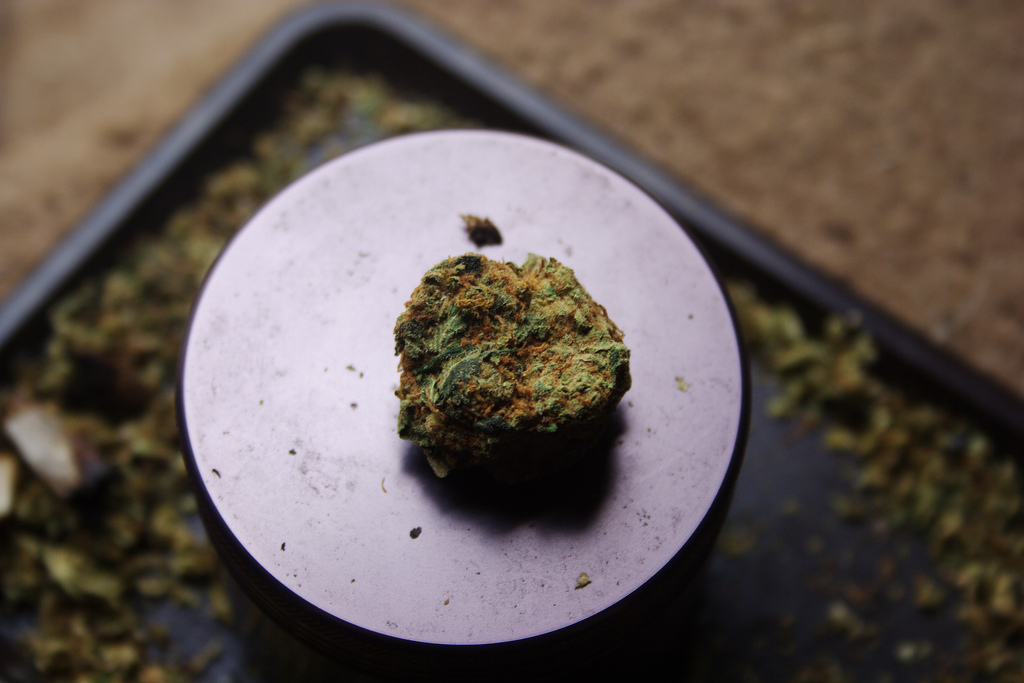No matter which strain of marijuana you smoke, chances are you have no idea why it’s called what it is, especially as some newer strains seems to take strange strains to new levels. Pineapple Express, Purple Kush, Blue Dream: what do they all mean? Where did these strains originate and why are they called what they are? We did some digging and found the origins and stories behind of some of the most popular strain names around.
White Widow
This award-winning sativa/indica hybrid is a very potent strain due to the fact that its THC level sits at an impressive 20%. The strain is attributed to two different breeders, but some feel that out of the two, Shantibaba deserves the most credit for finding the father strain in India and crossbreeding it with a Brazilian native strain in the Netherlands. The plant actually goes by two different names ever since Shantibaba left his original company, Green House Seed Company, to found a new company called Mr. Nice Seedbank. The strain’s original name was White Widow, due to the fuzzy white trichomes on the buds, but since that name was owned by his old company, he decided to rebrand it as the Black Widow.
Blueberry
Known for its blueberry flavor, Blueberry is a popular indica strain that was bred right here in the United States by DJ Short. After experimenting with and breeding over 100 different plants, DJ Short found two very potent sativa strains: Juicy Fruit (also known as Fruity Juice or Juicy Fruit Thai) and Purple Thai, the latter of which turns purple when it’s cold. Purple Thai quickly became its creator’s favorite, who noted that it wasn’t as emotionally overpowering as Juicy Fruit. When he was introduced to the now very popular Afghan indica strain, he decided to lace the powerful Juicy Fruit with it, creating what we now know as Blueberry. While Blueberry’s parents are both indica and sativa, its dominant characteristics are indica, meaning the plant is classified as an indica rather than a hybrid strain.
Northern Lights
Just like Blueberry, Northern Lights has Afghani roots to thank for its popularity. This pure indica strain, that can often have a shiny or even purple appearance (hence the name), apparently originated in Seattle under the care of a man known as “The Indian” but also became popular in Holland, earning international recognition and rising to stardom. The popularity of Northern Lights in Holland is credited to Neville Schoenmaker, a business partner of Shantibaba, the man credited with discovering White Widow. One story is that Schoenmaker was given various female strains of The Indian/Northern Lights, which he then crossbred with Afghani indica, but there seems to be a lot of speculation as to exactly how this strain came to be. Regardless its origins, Northern Lights has become extremely successful, even fathering some of the most popular hybrids, such as Sour Diesel, Shiva Skunk and many more.
Kush
This strain is found in the Hindu Kush mountain range (a subrange of the Himalayas) that touches the borders of India, Afghanistan, and Pakistan. While the mountain range has a deep, bloody history attached to it, one great discovery emerged from the chaos: a resinous, indica-dominant plant. Named for the mountain range in which it was found, Kush is one of the strongest indicas around, giving consumers a heavily sedated high well-suited for medicinal use to treat stress, insomnia and pain.
Cannabis strain names appear to either come from a rich history or arise seemingly out of thin air. Some strains are even named for their creators who found magical ways to cross-breed them and create potent, colourful and award-worthy strains. Today we enjoy hybrids with features borrowed from these four strains quite often, and while the names are catchy and playful, the history behind them is rich and fascinating.











